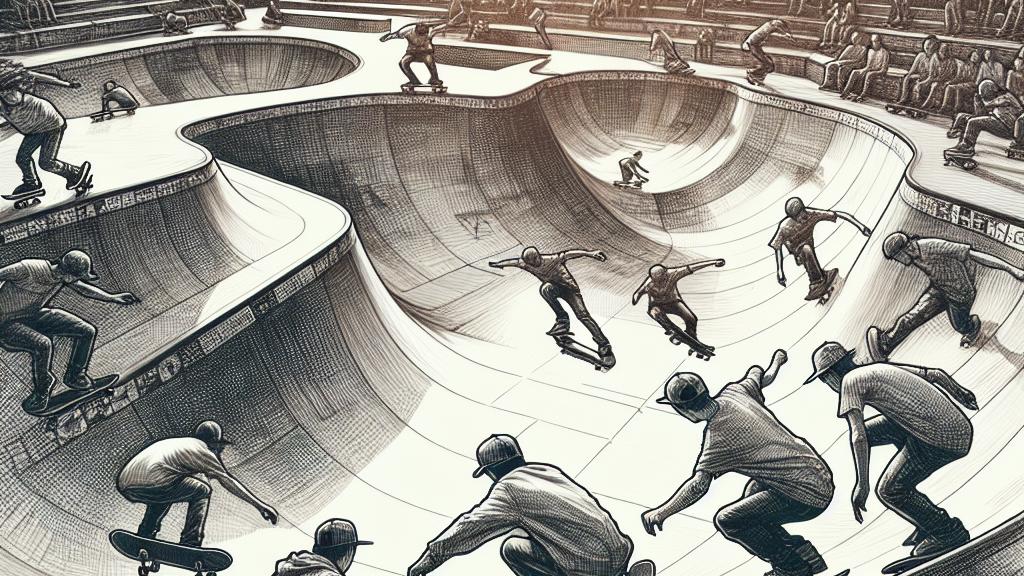Pumping Up Speed: How Skateboarders Master Physics on the Half-Pipe
Overview
- Skateboarders leverage a technique called 'pumping' to gain speed.
- Physics principles guide the execution of tricks and maneuvers on half-pipes.
- A strong understanding of physics enhances performance and trick complexity.

Mastering the 'Pumping' Technique
In Japan, skating communities have embraced the 'pumping' technique to amplify speed on half-pipes. This method involves a skater shifting their center of mass dynamically as they ascend and descend the ramp. Research indicates that the timing of crouching and rising can significantly affect acceleration—allowing skaters to maintain or gain speed without extra pushes. For example, a skater crouching as they approach a transition and then rising at the peak optimizes their speed, demonstrating a practical application of physics in enhancing athletic performance.
The Physics Behind Skateboarding Tricks
Understanding physics is crucial for executing skateboard tricks effectively. Take the hippie jump as an example; the skater maintains horizontal speed while leaping vertically due to the principles of projectile motion. The right timing and angle ensure a safe landing on the board. By learning about forces like gravity, inertia, and momentum, skaters not only improve their capabilities but also perform complex tricks with confidence. Knowledge of physics equips both beginners and veterans with the tools to explore new moves while ensuring their safety.
Skill Enhancement Through Physics Education
Incorporating physics into skateboarding training empowers skaters to analyze their movements. Studies show that skaters with a firm grasp of physics achieve higher efficiency in their maneuvers, ultimately enhancing performance. For instance, understanding how to lean correctly can make a dramatic difference in executing turns or tricks. This scientific foundation allows skaters to experiment safely with advanced techniques, transitioning from basic to complex maneuvers while minimizing the risk of injury, demonstrating the synergy between science and sport.
Competitive Edge Through Scientific Understanding
In the competitive world of skateboarding, a profound knowledge of physics offers a distinct advantage. Skaters who can intuitively control their body mechanics can perform highly technical tricks that capture judges' attention. For example, adjusting their weight distribution during a trick can affect their air time and landing precision. As competitions increasingly emphasize both technical complexity and style, understanding the physics at play becomes crucial for skaters aspiring to stand out and earn accolades.
Innovations in Skateboarding Technology
The integration of physics into skateboard design is opening doors for future innovations. Engineers and skateboard designers are working on creating equipment that enhances performance while ensuring safety based on scientific principles. For instance, new materials that reduce weight yet maintain strength can help skaters achieve higher speeds. This evolution in technology continues to challenge the boundaries of skateboarding while highlighting the importance of physics in driving advancements in the sport.
Educational Opportunities through Skateboarding and Physics
The fusion of physics and skateboarding creates a unique educational platform, engaging young people in learning about science in a fun and dynamic environment. Schools that incorporate skateboarding into their programs can teach fundamental physics principles through hands-on experiences. Utilizing skateboarding as a teaching tool promotes interest in STEM fields while fostering critical thinking and problem-solving skills among students. This innovative approach not only enhances understanding but instills a love for science and physical activity.
The Future of Skateboarding and Physics Collaboration
As skateboarding continues to grow globally, the collaboration between physics and the sport is likely to evolve further. With ongoing research and advancements in technology, skateboarders can expect to see improved designs that enhance performance, such as boards tuned for specific types of tricks or conditions. This intersection of science and sport not only benefits the athletes but also inspires future generations to delve deeper into the mechanics of movement, creating a robust community that appreciates both skateboarding and the scientific principles that underpin it.

Loading...